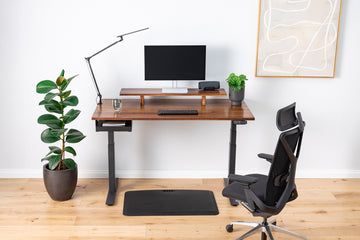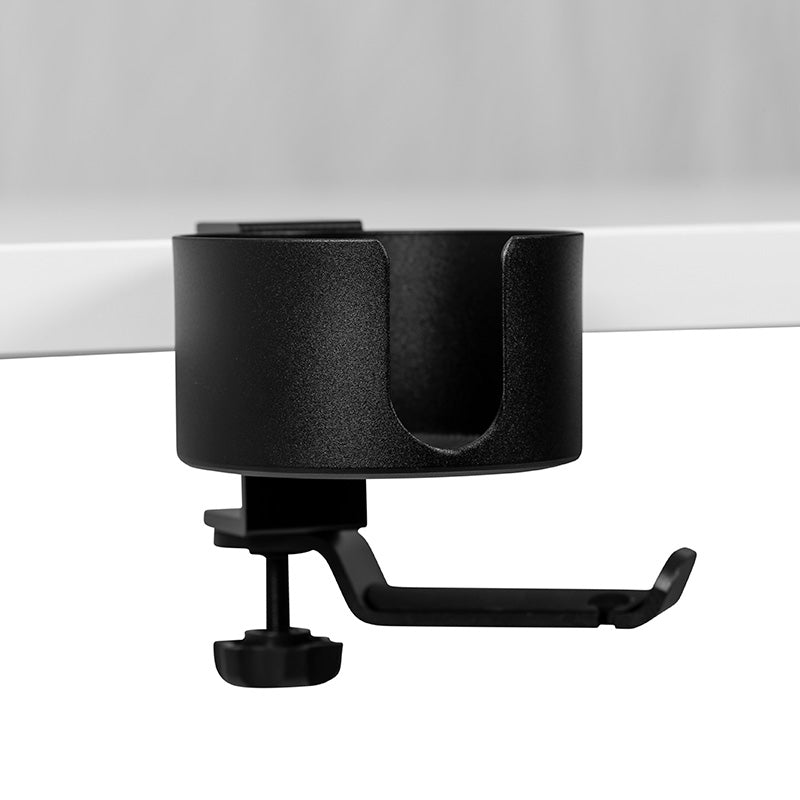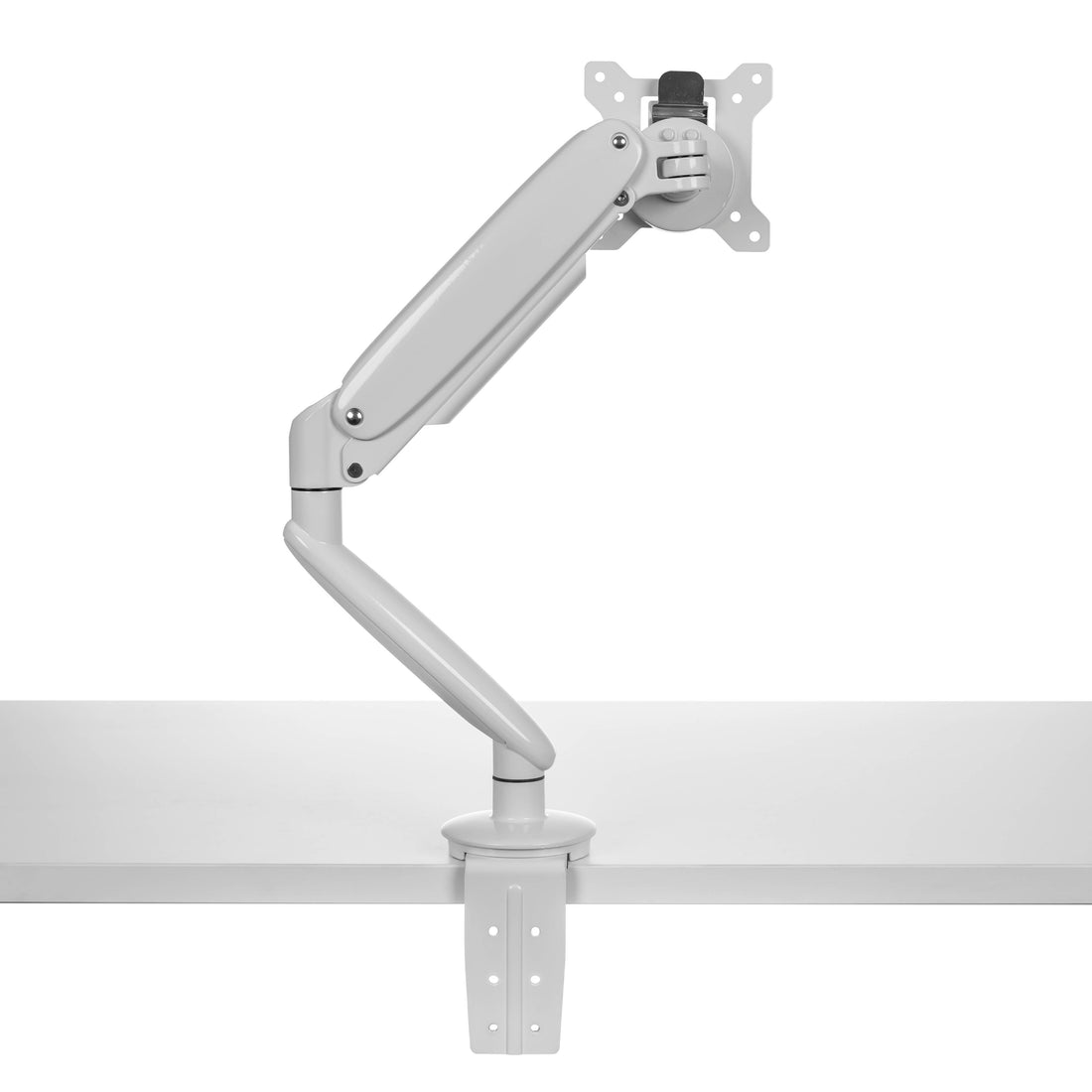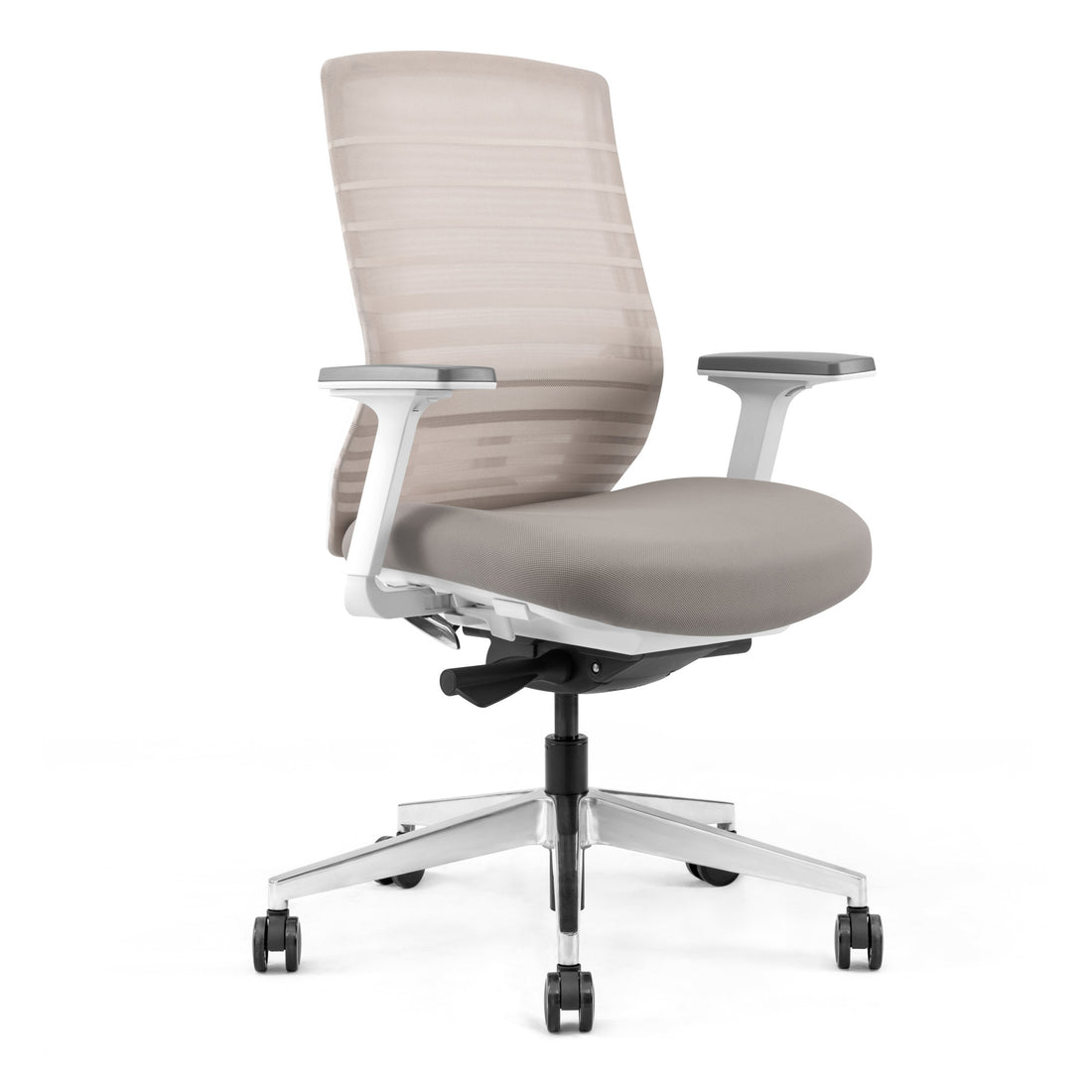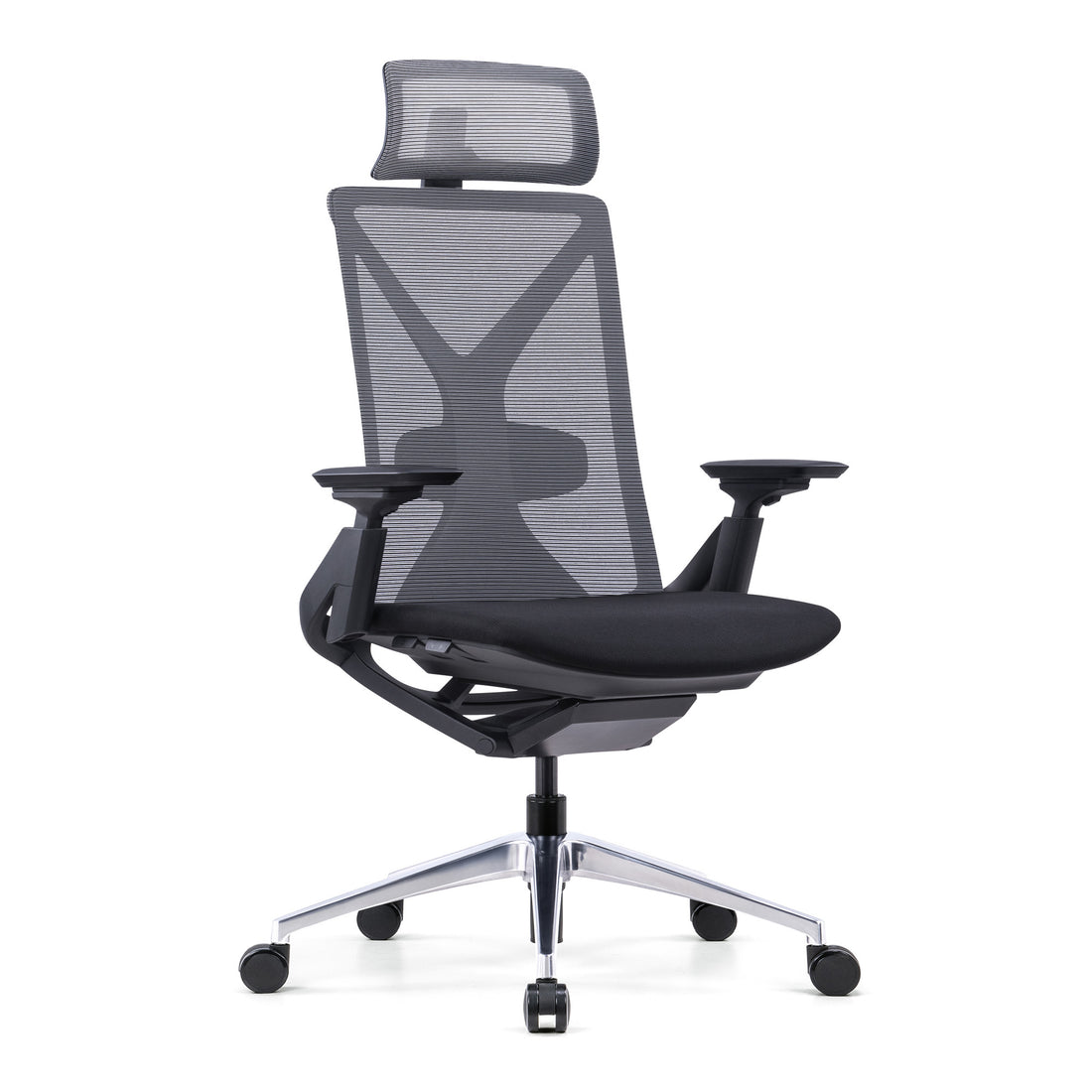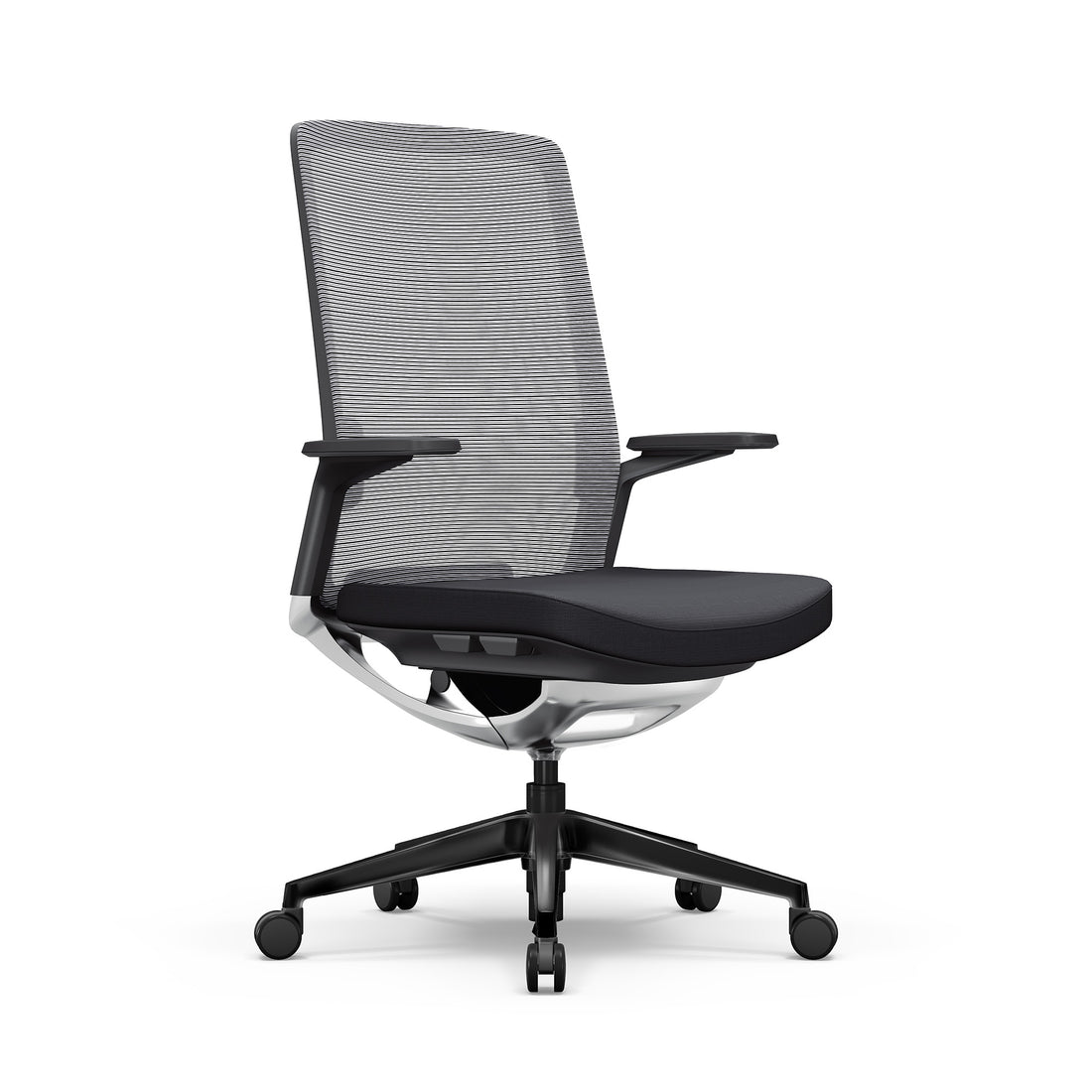By Paulina Wegrzyn.

Standing desks are gaining popularity in the office, but have yet to gain much traction in the classroom. However, studies have shown that the use of a standing desk among school-aged children and teenagers can have significant positive effects. Here is a brief overview of the benefits available to your child or teenager from using a standing desk.
Benefits
Energy Expenditure
A systematic review conducted in 2016 concluded that standing desks help increase energy expenditure as compared to sitting desks in children. Eight different studies showed that time spent standing increased by an average of 30% when children had used a standing desk throughout their school day.
Energy expenditure is a direct measurement of how many calories are being burned. An increase in energy expenditure prevents weight gain, which is especially relevant if your child is in the overweight or obese category.
Promotes an Active Lifestyle
While energy expenditure is an important consideration, it is even more crucial to consider how periods of prolonged standing affects children. The same systematic review reported that some studies saw an increase in physical activity among participants following the use of a standing desk.
Ingraining healthy habits into children increases their chances of becoming healthy, active teenagers, and later, adults. This is perhaps the most important benefit of a standing desk in the long term- healthy habits start in our youth.
Increases Attention Span
Standing desks are particularly advantageous for children or teenagers who have difficulty concentrating, as they are able to be more mobile and feel less constrained by their desks. They can move around more freely while standing, and take more frequent walking breaks if need be.
Using a balance board can further promote concentration and increase the attention span of your child or teenager, since it gives them an outlet for their fidgeting that allows them to concentrate on their coursework.
Neurocognitive Benefits of Standing Desks
A pilot study conducted in 2015 investigated the neurocognitive benefits of standing desks. Researchers were particularly interested in the improvements of executive functioning and working memory, which are both tasks of the frontal part of the brain.
Thirty-four 13 to 14 year old students, entering their first year of high school, were recruited and their executive functioning and working memory were tested, once before the use of the standing desk, and then after 28 weeks of continued exposure to the standing desk. Executive functioning and working memory were greatly improved after 28 weeks of using a standing desk.
Increases Calorie Burning
Originally standing desks for students was considered a practical means to address the burgeoning rate of childhood obesity.
Although studies suggest that standing burns more calories, obesity is a complex issue that requires several lifestyle interventions to resolve.
Initial reports overestimated the number of additional calories used by standing. But newer studies measuring energy expenditure have found that standing only burnt 8 more calories per hour than sitting.
While the calories burned may not add up to much, the other health benefits associated with standing are certainly worth the investment.
Attention Deficit Hyperactivity Disorder (ADHD) and Autism (ASD)
Exploration on the effect of stand up desks and children with ADHD and ASD is in its infancy and as such studies are few.
However, the limited research has shown some promising results including increased academic engagement time.
Standing increases oxygen flow to the body and brain which assists with focus issues and helps prevent easy distraction.
Standing allows physical movement which decreases stress and anxiety and acts as a physical coping mechanism for many kids with these challenges.
Why is sitting getting a bad rap?
Here’s a quick look at how detrimental sitting for long periods can be.
- Contributes to obesity and diabetes
- Weakens the muscular and skeletal systems
- Adds stress to spinal structure
- Predisposed children to cardiovascular disease in adulthood
- Decreases concentration and attention span.
A Child’s Perspective
A 2013 study conducted in New Zealand monitored thirty 3rd and 4th grade students in their overall time spent sitting and standing, and how many times they transitioned between sitting and standing throughout the day. While all the results were positive, perhaps the most promising were the opinions of the students themselves as well as their teachers.
Children spoke enthusiastically of the workstations, citing their enjoyment of being able to choose between sitting and standing. The children’s teachers appreciated the flexibility in learning that the sit-stand desks offered.
The Consequences of Not Using a Standing Desk
By not using a standing desk you are missing out on the proven benefits that they offer.
Your child may develop different habitual postural patterns if they sit for too many hours of the day. Interrupting sitting with standing can help your child or teenager develop improved spinal awareness and a stronger core with prolonged use. This is especially relevant if your child is still growing.
Additionally, standing desks can improve your child’s attention span, which has a positive impact on their productivity and schoolwork.
Choosing a Stand Desk for Children
A standing desk, also known as a sit-stand desk, are height adjustable desks that allow the user to alternate between sitting or standing.
A standing desk is an investment so you want a desk that is not only durable, but that can accommodate the child’s growth.
A sturdy steel base provides strength while high-pressure laminate worksurfaces offer durability and are easy to clean.
There are numerous different styles of sit to stand desks and several important factors apply when choosing the right standing student desk. There is no one size fits all formula.
While a mobile adjustable desk may be ideal in a classroom, a height-adjustable corner desk or narrow standing desk would work better at home.
Considering desk dimensions
What size standing desk do I need to buy for my child is a frequently asked question.
Incorrect work areas affect posture and productivity and an uncomfortable child becomes distracted and disruptive.
The size of the room or space available as well as the environment the desk is to be used in will inevitably influence the stand-up desk dimensions.
There is a large variation in height-adjustable desks ranging from small sit-stand desks and wall-mounted adjustable desks to mobile desks that make it easy to rearrange seating in a classroom.
Sit-stand desks often lack the storage space of traditional desks.
Compartments for holding school supplies are essential. This may include stationary trays and tablet slots.
A hook or similar accessory to hold backpacks is necessary for classroom applications to keep the floor space free of clutter,
How much equipment needs to be accommodated on the desk surface must also be considered.
A narrow standing desk may be a suitable student desk for those using one or two books at a time. However, if the user requires space for a computer and multiple electronic devices, choosing a large stand-up desk makes more sense.
Fitting a Sit-Stand Desk to a Child
The UpDown sit-stand desks range in height between 64cm-129.5cm, which means that a very small child may not be able to comfortably sit or stand in proper ergonomic form.
There are a few easy adjustments that can be made so that your child can still use a sit-stand desk comfortably.
While seated at the desk, your child’s shoulders should be relaxed and elbows should be at table height if they are not using a screen. If using a screen or computer, the elbows should be 3-5cm below the table, so that they can type comfortably and keep their shoulders relaxed.
Your child’s feet should be planted firmly on the ground while using the seated desk function. If they do not reach the ground at the lowest setting, use a footstool or stack of books under their feet for comfort. Using a footstool, a child that is at least 80cm tall would be able to comfortably use an UpDown standing desk if using a standard office chair with a ground clearance of around 78cm. Typically, a footstool is not required when the child is at least 100cm tall, given the same standard office chair dimensions. These height specifications can vary greatly with the ground clearance of the chair your child is sitting in.
Remember, even if your child does not fit optimally into their desk when it is purchased, they will grow into it with time. A standing desk is an investment that will serve your child for years to come, more so than a traditional seated desk which cannot be adjusted while your child grows. UpDown desks have a ten-year warranty so you are protected as your child grows up.
Safety
The UpDown Desk Pro Series desks have an anti-collision mechanism, which will automatically stop the desk and then move it in the opposite direction by a few centimeters when it detects it has hit something. This helps protect kids, the desk and surrounding items.
Consider supervising your child while they are using their sit stand desk for the first few days after purchase to ensure that they understand how it is to be used. Ensure that they understand the control mechanisms and how to properly raise and lower the desk, as well as how to safely back their chair away, or walk away from, the sit-stand desk after use.
Don’t put the desk too close to other items such as furniture and explain to your child that the desk needs clear space to move freely.
UpDown Desk's Melamine and Bamboo PRO Series desks are a great option for kids and teens. Alternatively get a frame only and use your existing desktop.
Citation List
Hinckson, E. A., Aminian, S., Ikeda, E., Stewart, T., Oliver, M., Duncan, S., & Schofield, G. (2013). Acceptability of standing workstations in elementary schools: A pilot study. Preventive Medicine, 56(1), 82-85. doi:10.1016/j.ypmed.2012.10.014
Mehta, R., Shortz, A., & Benden, M. (2015). Standing Up for Learning: A Pilot Investigation on the Neurocognitive Benefits of Stand-Biased School Desks. International Journal of Environmental Research and Public Health, 13(1), 59. doi:10.3390/ijerph13010059
Minges, K. E., Chao, A. M., Irwin, M. L., Owen, N., Park, C., Whittemore, R., & Salmon, J. (2016). Classroom Standing Desks and Sedentary Behavior: A Systematic Review. Pediatrics, 137(2). doi:10.1542/peds.2015-3087
Did you find our blog helpful? Then consider checking:
- Standing Desk Height
- Standing Desks For Tall Person
- Standing Desks Primary School
- Standing Desks And Upper Back Pain
- What Is The Ideal Ergonomic Monitor Height For Me?
- Standing Desks And Neck Pain - Sciatica, Shoulder & Neck Pain
- How To Set Up An Ergonomic WorkStation
- Setting Up A Home Office
- Are Standing Desks Worth It?
- Instant Tax Deduction


